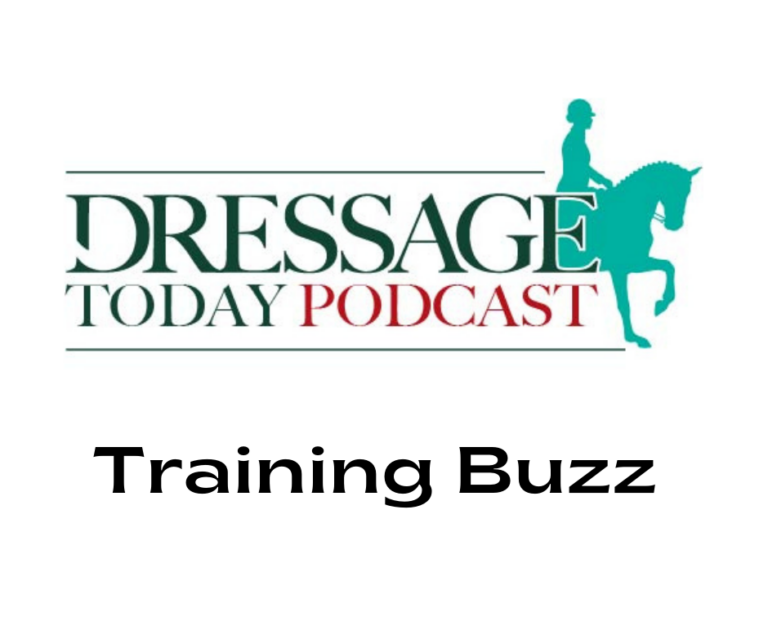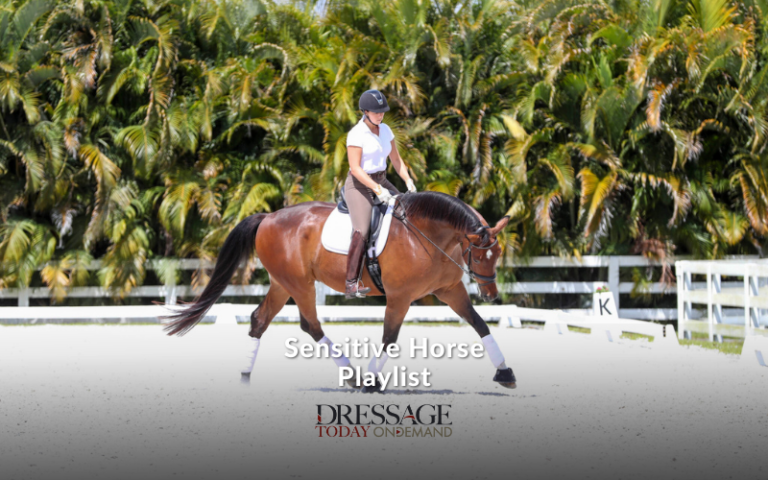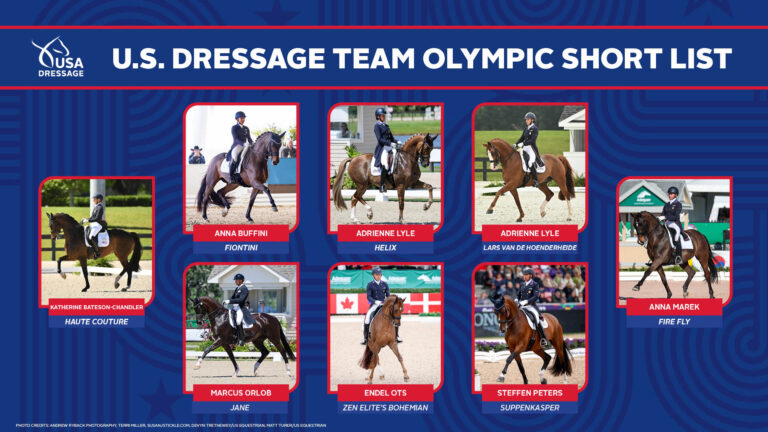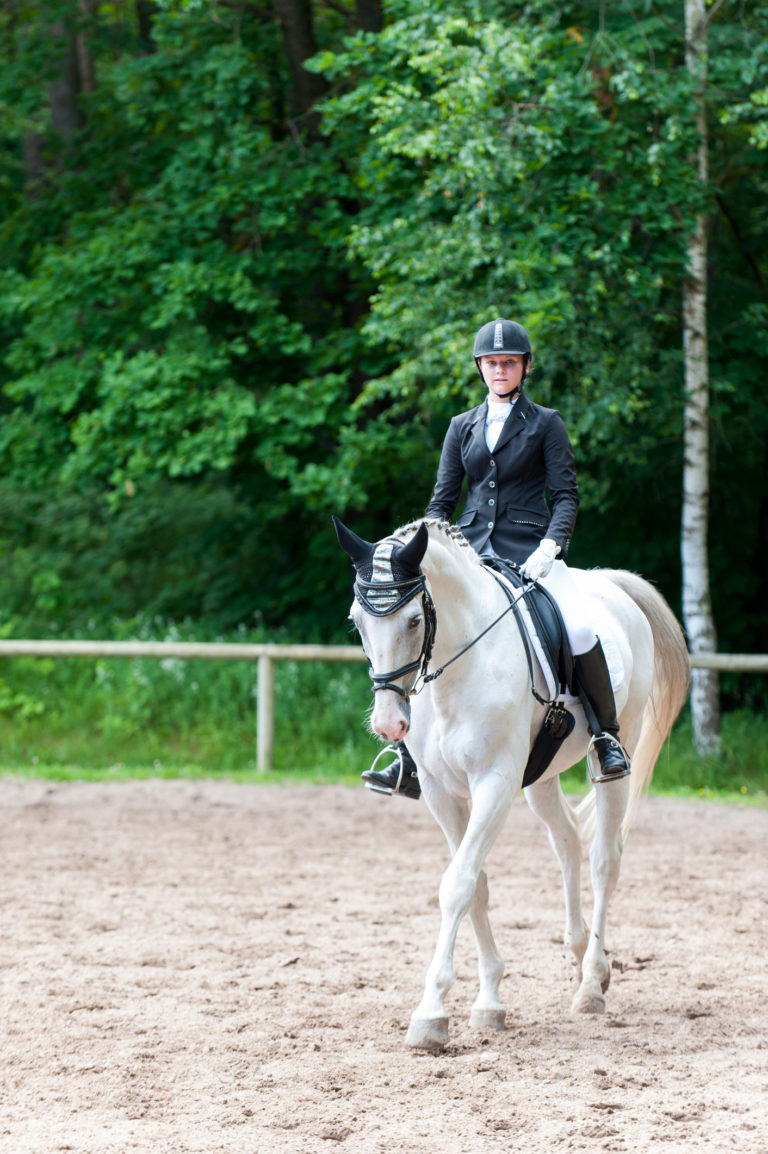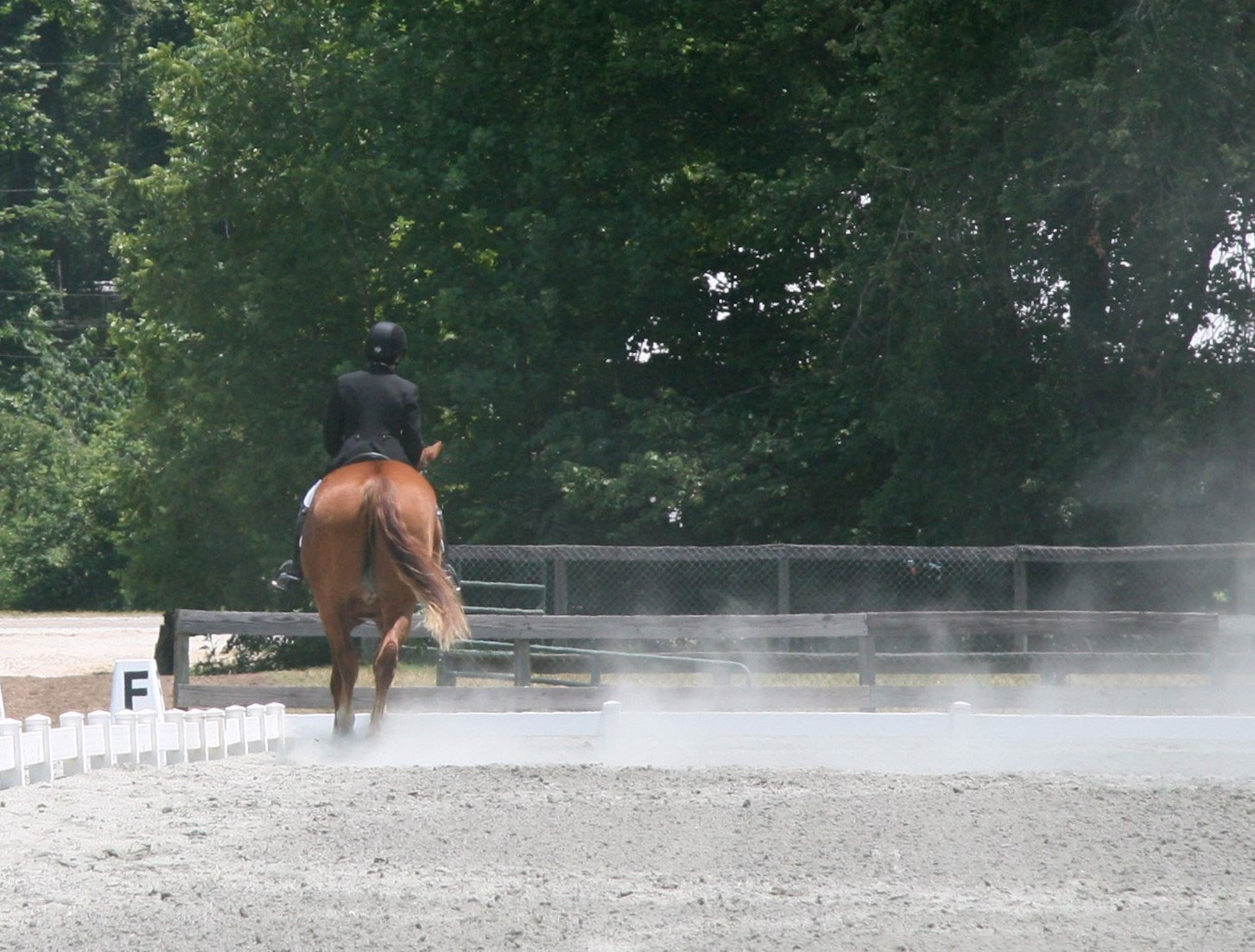
Showmanship is the art of presenting your horse in the best light to the judge, highlighting your horse’s attributes. This is a rider who knows how to use corners to half-halt in preparation for upcoming movements and how to ride a straight center line. A phrase I often think about regarding a rider with good showmanship is: “She doesn’t throw away points.”
One example at Training Level: You know your horse has a lovely transition from canter to trot. Since you have the option of performing that transition anywhere from E/B to the corner, it’s a good strategy to do it nearer to E/B, where the judge will have a clear view. On the other hand, if you aren’t certain the transition will be smooth, it might be smarter to do the transition closer to the corner, since your upper body will obscure the view of your horse’s head and neck from the judge at C (not however, if there’s a judge on the side – when there’s two judges, there’s pretty much no place to hide.)
I sometimes imagine that there’s an unspoken discussion going on between the rider and the judge: Rider: “How can I do this movement so the judge won’t figure out there might be a problem.” Judge: “I know that trick.” Here’s a couple examples I noted last weekend while sitting at C.
From Prix St. Georges: The rider might be a tad worried that her canter half-pirouette will be too large. So, she starts out of the corner on a line aimed more at A than at K or F, so when she finishes the pirouette she actually will be on the correct diagonal line. The strategy can backfire, though, because when I see that fudged turn in the first corner, I already have my ears perked to watch for a wide pirouette.
Another example: From Third Level on, the lengthened walk is an “Extended Walk,” not the “Free Walk” at Second Level and below. Unlike the free walk, the rider should maintain a connection with the bit. I often see riders fudging that at Third and above by allowing a bit of loop in the rein while still appearing to have kept the connection to the bit. That seems to happen most often with a horse that has a lateral tendency in the collected walk, and the rider is trying to improve the rhythm in the extended walk by throwing the reins away while not appearing to do so. After judging thousands of extended walks over the years, I realize it can be a game of inches – or less than an inch – in rein length between a true extended walk and a free walk.


